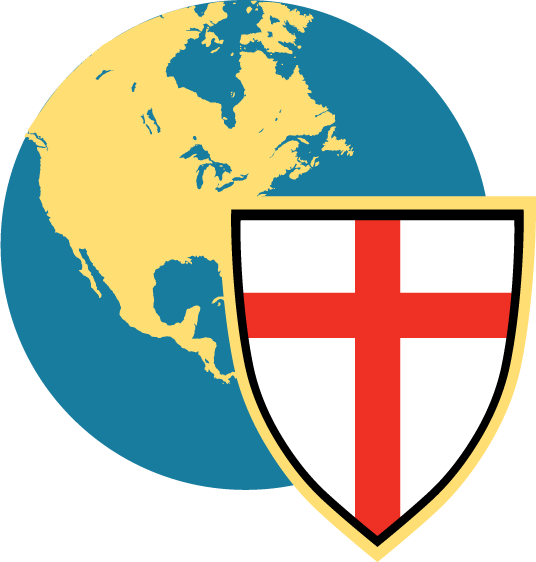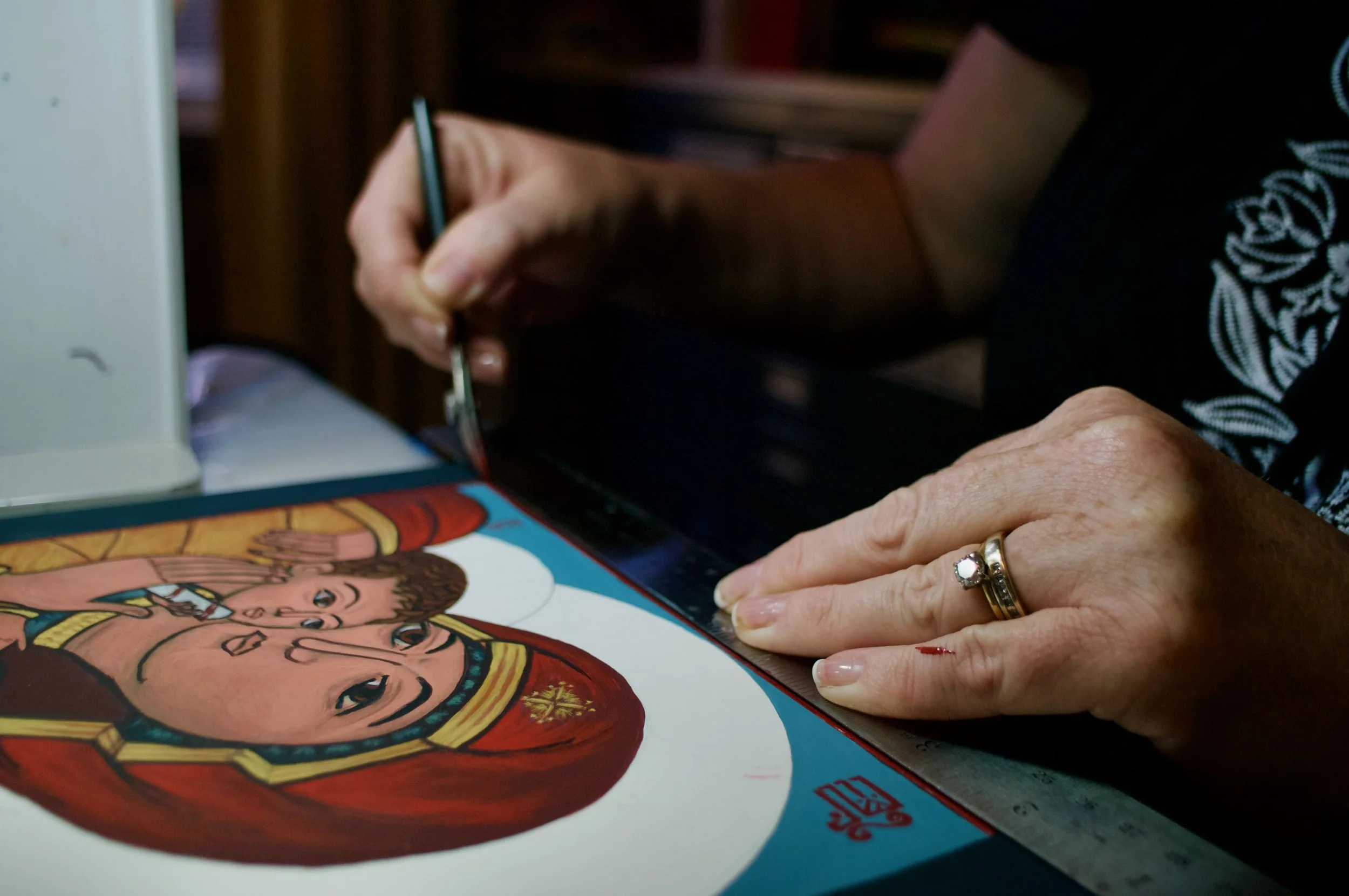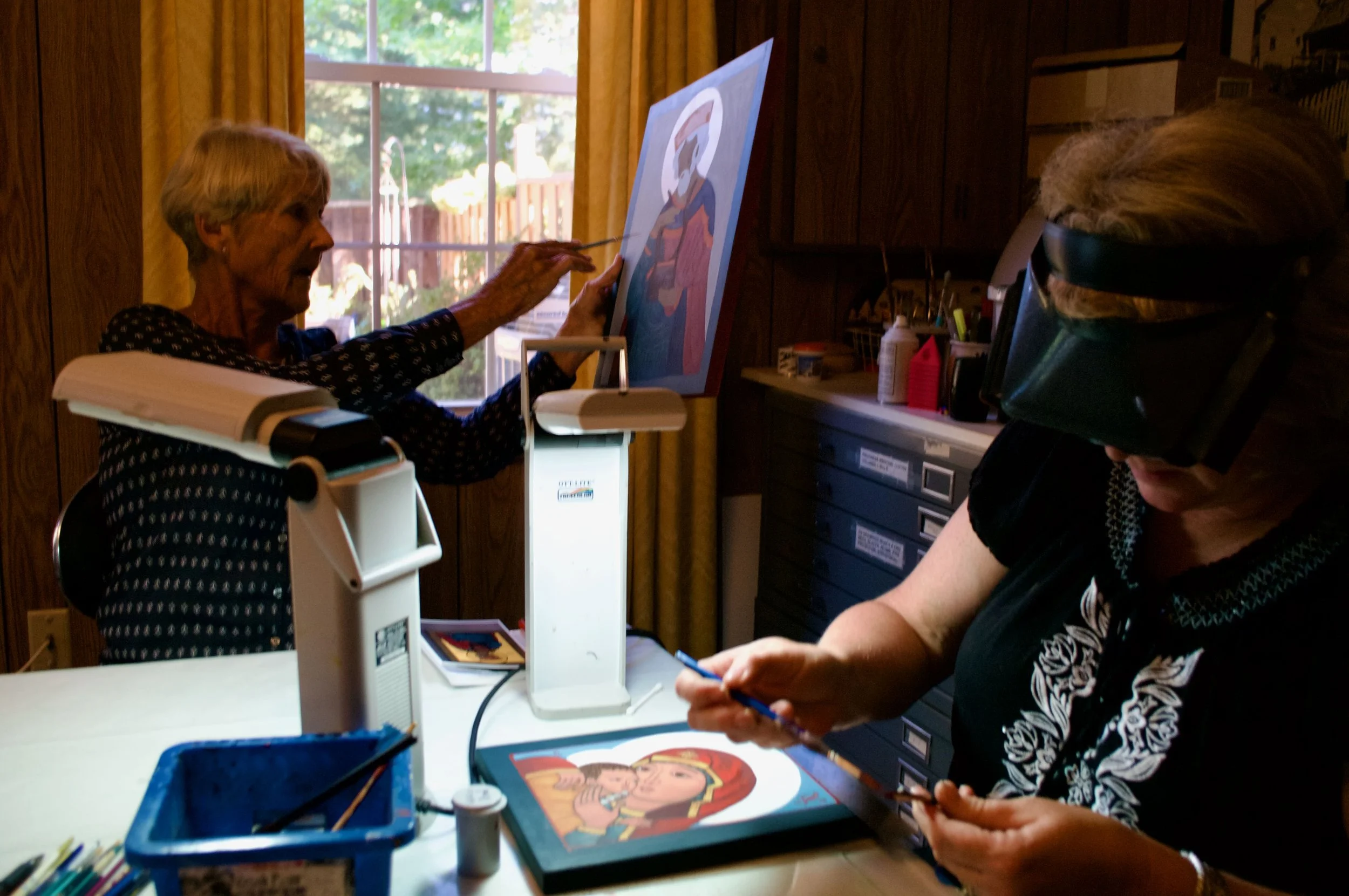Cloud of Witnesses: Icons in an Anglican Church
Anglicans can be an eclectic bunch. We are more than willing to take something good in the broader church and make it our own. A case in point is the 18 icons hanging on the walls near the entrance to the sanctuary at Church of the Epiphany in Chantilly, VA.
The icons, all hand-made by Epiphany members, represent the “Great Cloud of Witnesses” of Hebrews Chapter 12. Central to worship and devotion for Eastern Orthodox Christians, icons and iconography came to Epiphany with a dearly loved member of the congregation, Elizabeth Hudgins (1943-2020). An author, scholar and teacher with a deep knowledge of the Bible, Elizabeth had discovered icons in a strange place - the Anti-Religion Museum in Leningrad (now St. Petersburg). She was leading a student trip to Soviet Union in 1977. There among the anti-religious displays, an icon of Jesus on the cross brought her to tears. She was surprised by this. A self-described “good evangelical.” she later wrote “I had never paid any attention to icons until then…icons had no place in my theological understanding. They were idols, I thought, and not very pretty on top of that!” All that changed for Elizabeth as she investigated icons and iconography more deeply in the years that followed.
Iconography (literally “image writing”) is a very ancient Christian art form is used to decorate churches and homes with pictures of the people and events of the Bible and from the life of the church. The process of painting the icons is a spiritual and devotional practice that many find draws them closer to God. Icons have individual elements but are not an individualistic piece of art. Instead, those who paint (or “write”) icons rely on a canon of past work and rules about color and perspective that guide how a person, or an event is portrayed. Through years of practice, classes, and more practice, Elizabeth became an accomplished iconographer, and began to teach others how to make icons in the studio she set up in her house.
Elizabeth invited many to write icons with her. Most were from Epiphany, but others joined from her broad network of friends. The “Cloud of Witnesses” at Epiphany came about as Epiphany’s rector, the Rev. Peter Frank, became familiar with Elizabeth’s work, and thought about how it might be incorporated into the design of Epiphany’s new worship space.
“It’s very powerful to see the prophets and kings of the Old Testament, the martyrs and apostles of the New Testament, and the saints of the church lining the walls and looking in as we walk in on Sunday mornings,” said Peter. “I love the fact that Elizabeth not only was part of creating our icons, but also involved so many from our congregation in the project. This is a powerful bit of her legacy at Epiphany,” he added.
While Elizabeth died in 2020, her students at Epiphany continue to gather to write icons together. There is still a Thursday morning Bible study at Epiphany that calls itself “Elizabeth’s Bible Study” in her memory and her honor. Not only that, but every Sunday, Epiphany begins its worship seeing the whole church joining-in though the icon panels, urging every worshipper forward in life with Christ. “Therefore, since we are surrounded by so great a cloud of witnesses, let us also lay aside every weight, and sin which clings so closely, and let us run with perseverance the race that is set before us.” (Hebrews 12.1).
The Rev. Peter Frank is the Rector of Church of the Epiphany in Herndon, VA.
Click on each photo to enlarge and see caption.
Photo 1: Iconographers Margaret Stromberg, Catherine Zimmerman, Elizabeth Hudgins and Bobbi Fetzer with four of the 18 “Cloud of Witnesses” icons that now hang in Epiphany’s sanctuary
Photo 2: Painting (or “writing”) an icon is a contemplative process that is governed by centuries of tradition.
Photo 3: Epiphany iconographers at work in Elizabeth’s studio.



